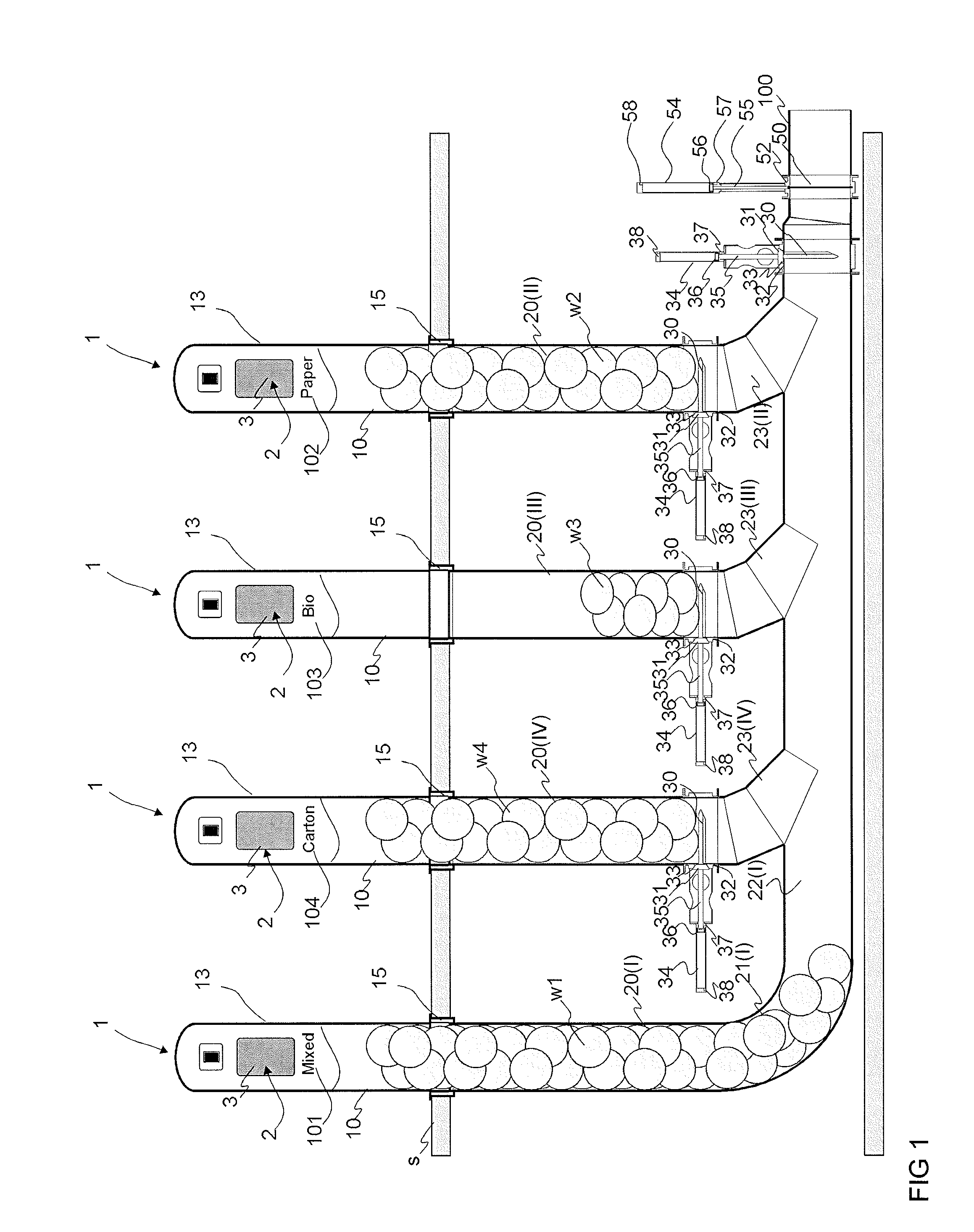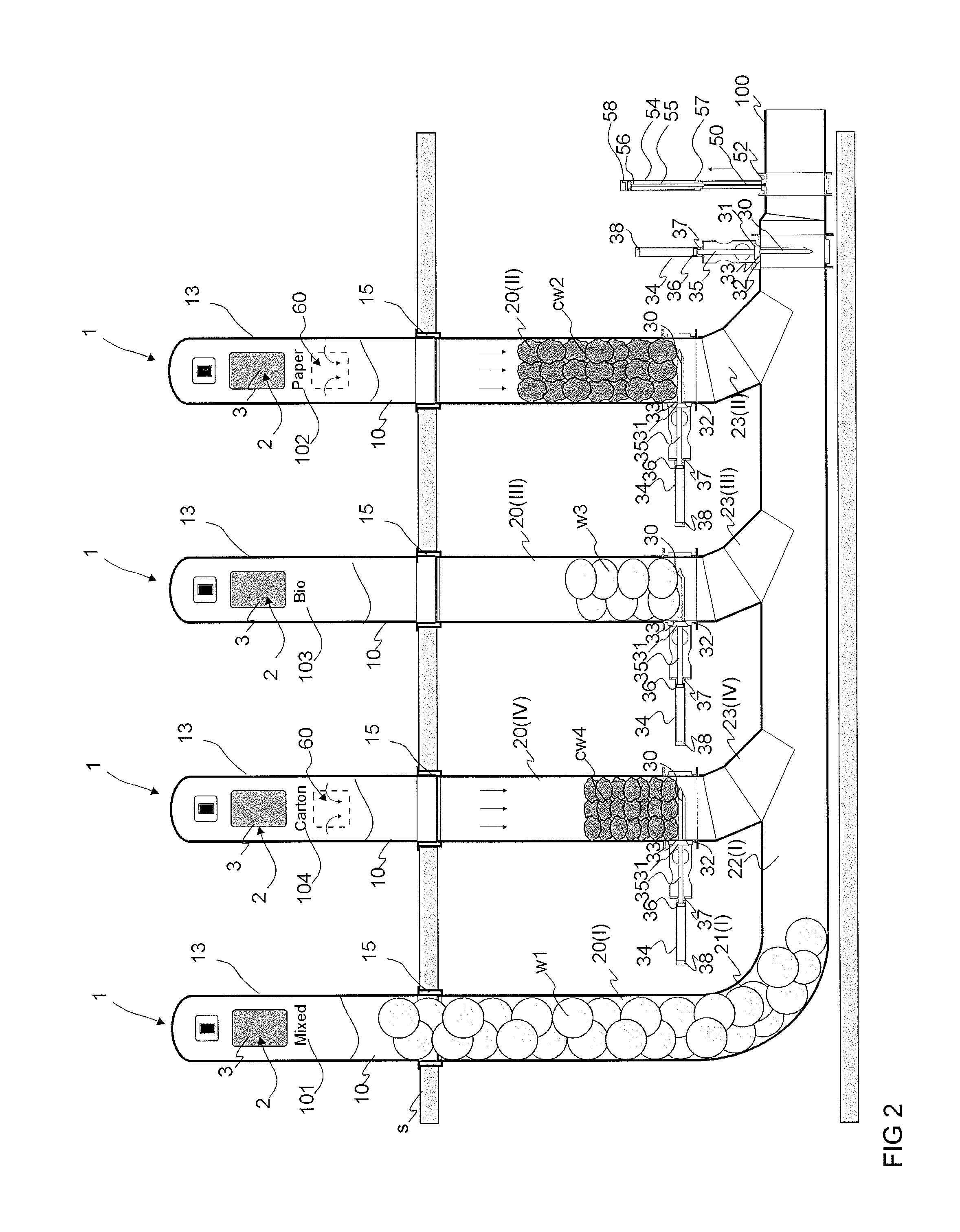Method and apparatus for feeding in and handling waste material
a waste material and waste technology, applied in the field of methods and equipment, can solve the problems of high excavation costs, and large space requirements of intermediate containers, and achieve the effects of reducing energy consumption of the conveying system, increasing the capacity of the input point, and increasing was
- Summary
- Abstract
- Description
- Claims
- Application Information
AI Technical Summary
Benefits of technology
Problems solved by technology
Method used
Image
Examples
Embodiment Construction
[0032]FIGS. 1-8 present a simplified view of an apparatus according to the invention. The apparatus typically comprises at least one feed-in station, which comprises a number of input points 1. FIGS. 1-8 present a feed-in station of a pneumatic pipe transport system for wastes, which station comprises at least two input points 1. In the embodiment of the figure there are four input points 1. The input points 1 are typically for a number of different categories of material. FIGS. 1-8 thus present four input points 1, each of which in the embodiment of the figure is intended for a different category of material. Depending on the application site, there can be more or fewer input points in the feed-in station. Also there can be a higher or lower number of material categories intended for feeding into the input points 1 of the feed-in station. The input points 1 intended for different material categories are marked in the figures with the different reference numbers 101, 102, 103, 104. ...
PUM
 Login to View More
Login to View More Abstract
Description
Claims
Application Information
 Login to View More
Login to View More - R&D
- Intellectual Property
- Life Sciences
- Materials
- Tech Scout
- Unparalleled Data Quality
- Higher Quality Content
- 60% Fewer Hallucinations
Browse by: Latest US Patents, China's latest patents, Technical Efficacy Thesaurus, Application Domain, Technology Topic, Popular Technical Reports.
© 2025 PatSnap. All rights reserved.Legal|Privacy policy|Modern Slavery Act Transparency Statement|Sitemap|About US| Contact US: help@patsnap.com



